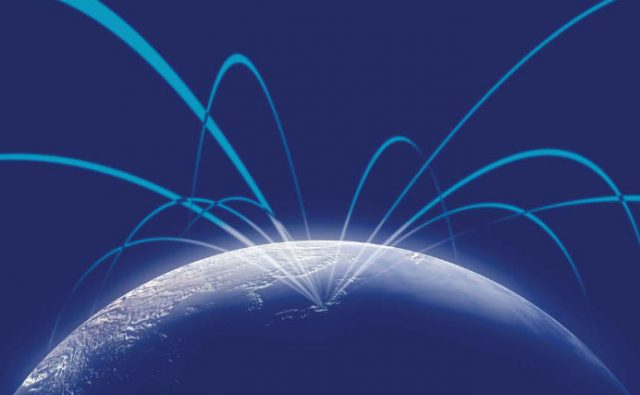Much has been written and said about the progress of LoRa in the world’s developed economies, but the technology is also gaining rapid acceptance in the developing countries as well, with large scale deployments in places such as India, Africa and South America, writes Peter Dykes
Perhaps one of the most ambitious deployments is on the Indian subcontinent. VS Shridhar, senior vice president and head of Industrial IoT (IIoT) at Tata Communications says, “India is seen as a high-growth potential market for IoT and it has recently taken the lead in global smart cities development. Tata Communications is building the foundation for IoT in India – building the world’s largest LoRa network, spanning nearly 2,000 communities and touching over 400 million people in total. In 2017, the company had already deployed LoRa network in 38 cities in India, with many more cities planned in 2018. The initiative will bring together devices, applications and other IoT solutions to create an India-wide IoT ecosystem.”
He adds that a tangible example of an IoT network which has been rolled out in India by Tata Communications is the LoRa network. Recently, Tata Communications partnered with MOTWANE to deploy 300 smart street lights for Jamshedpur Utilities and Services Co. (JUSCO), India’s only comprehensive urban infrastructure service provider, using LoRaWAN technology. The system enables smart features such as switching the lights on and off or dimming them remotely from a central command centre. The lights can be adjusted in clusters depending on need in each location, which helps reduce manpower costs and energy consumption further.
Indeed, Tata recently announced a tie-up with digital infrastructure provider Mahanagar Gas Limited (MGL), one of India’s leading natural gas distribution companies, to deploy 5,000 smart gas meters in Mumbai. The company says the new smart meters will give households and businesses unprecedented visibility and control over their gas usage and enable MGL to enhance operational efficiencies. Tata predicts that the global smart gas meter market is set to grow from around US$1.59 billion in 2016 to US$2.27 billion by 2021 and it expects that there will be around 130 million smart meters across India in the next three years.
But there is more. Arnab Das, the vice president and global business leader for Service Line-IoT Offerings at Aricent, says, “The [Indian] market is on the cusp of significant growth in low power wide area network (LPWAN) deployments with several operators and technology firms are forming various alliances to address the service infrastructure availability. There are indications that a net is being created of LoRa WAN coverage that includes up to 50 cities across India. A significant number of use cases that can drive IoT application uptake are in trial phase using LoRa technology. The software and deployment and support service providers have also scaled up their readiness to provide trained personnel and innovative software driven intelligent services.”
Elsewhere, LoRa technologies are also gaining traction. In in 2017, South African wireless connectivity provider Comsol launched an open architecture LoRa LPWA network nationally in 2017. Backed by Cisco and IBM, the company claims it is the largest IoT network in Africa and was deployed on the back of Comsol’s R1.5 billion (US$122m) Open Access Layer 2 National network investment. It services all the major metropolitan networks in South Africa.
“IoT offers solutions for smart cities, smart businesses, and even many of the challenges we face as a society, for example managing scarce resources like water. By enabling smart tracking, smart perimeter control, smart agriculture, smart buildings, as well as smart city applications like metering and manhole cover monitoring, IoT is already fundamentally changing how we live. We are proud to introduce the network that is going to empower African utilities, businesses, and individuals to gain the benefits the IoT offers,” says Iain Stevenson, the chief executive of Comsol.
In South America, LoRa is also gaining rapid traction. In 2017, Argentina-based telecoms and technology player Inversiones Condor (ICondor), also launched its IoT network using LoRaWAN based on Semtech Corporation’s LoRa devices and wireless RF technology. ICondor, which created what is now the Movistar network and also the Claro (America Móvil) network. The company is now working to create an Argentine and South American nationwide IoT LoRaWAN network which it began in Buenos Aires and Rosario. The company is aiming to cover the whole country by July 2018. ICondor says it will serve many of the typical markets for IoT including asset tracking, metering, smart city and smart home applications and smart agriculture.
The other hot market in South America is Brazil. Following the release of new technical requirements for radio frequency (RF) communication devices enabling the operation of LoRa devices and technology throughout Brazil by Anatel, Brazil’s National Telecommunications Agency, Semtech says it is ready to roll out a LoRaWAN nationally. According to Frost and Sullivan, by 2021, the IoT market for applications and hardware is set to generate US$3.29bn in Brazil.
“The recent actions taken by the telecommunications regulatory agency for the largest country in Latin America have facilitated the immediate rollout of a LoRaWAN network in Brazil and, likely, the continent,” said Marc Pegulu, vice president and general manager of Semtech’s Wireless and Sensing Products Group. “Citizens of the eighth largest economy in the world will soon benefit from low power wide area networks (LPWANs) powered by Semtech’s LoRa Technology in a variety of exciting applications, including cities, building, supply chain and logistics, agriculture and metering.”
It is becoming quite clear that the major drivers behind the rollout of LoRa in developing regions of the world include smart cities, utilities and agriculture, the latter being particularly important in those countries with agro-based economies. While IoT alone cannot feed the world, it could potentially make agriculture a far more efficient undertaking. Similarly, by creating efficiencies in areas such as energy management, it could be an important part of developing nations’ strategies for growth without the attendant pollution experienced by the industrialised countries.










